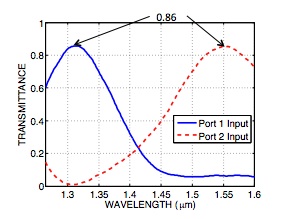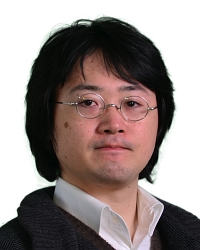TR2014-020
An MMI-based wavelength combiner employing non-uniform refractive index distribution
-
- , "An MMI-based Wavelength Combiner Employing Non-uniform Refractive Index Distribution", Optics Express, DOI: 10.1364/OE.22.008533, Vol. 22, No. 7, pp. 8533-8540, April 2014.BibTeX TR2014-020 PDF
- @article{Singh2014apr,
- author = {Singh, S. and Kojima, K. and Koike-Akino, T. and Wang, B. and Parsons, K. and Nishikawa, S. and Yagyu, E.},
- title = {{An MMI-based Wavelength Combiner Employing Non-uniform Refractive Index Distribution}},
- journal = {Optics Express},
- year = 2014,
- volume = 22,
- number = 7,
- pages = {8533--8540},
- month = apr,
- publisher = {OSA},
- doi = {10.1364/OE.22.008533},
- issn = {1094-4087},
- url = {https://www.merl.com/publications/TR2014-020}
- }
- , "An MMI-based Wavelength Combiner Employing Non-uniform Refractive Index Distribution", Optics Express, DOI: 10.1364/OE.22.008533, Vol. 22, No. 7, pp. 8533-8540, April 2014.
-
MERL Contacts:
-
Research Area:

Abstract:
A novel wavelength combiner using non-uniform refractive index distribution within a multimode interference device is proposed and simulated. The refractive index step creates separate localized modes with different effective refractive indices and two modes are strongly excited which form the basis of an interferometer. We applied the concept to 1.30/1.31 μm and 1.31/1.55 μm wavelength combiners on an InP substrate. The lengths of the devices are 1272 μm and 484 μm with simulated insertion losses of 0.6 dB and 0.67 dB respectively.


